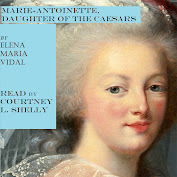In October 1171, Henry II of England landed at Waterford with an army, claiming to be ‘Lord of Ireland’ and changing forever the course of Irish history. Officially, Henry’s justification for invading Ireland was religious: the ‘reformation’ of the Irish church (although historians remain divided on whether Pope Adrian IV really issued the bull Laudabiliter authorising the annexation of Ireland). In the violence and upheaval that followed, it is easy to lose sight of the fact that the Anglo-Norman adventurers who carved out fiefdoms for themselves in Ireland engaged in a religious as well as a military and political project. However, the religious dimension of Henry II’s invasion evolved into a comprehensive attempt to impose a kind of ‘devotional Englishness’ on those areas of Ireland under English control – long before the Tudor attempt to turn Ireland Protestant. Like that later project, the attempt to impose English devotional styles on Ireland was ultimately without extensive success, but it reveals much about how the English crown tried to maintain control of Ireland.Share
In reality, on the eve of the Anglo-Norman invasion Ireland was already in the throes of religious reform. The Synod of Ráth Breasail in 1111 moved the country from the dominance of territorial monasteries to a more conventional system of diocesan bishops, while the efforts of the reforming Archbishop of Armagh, Malachy, began to regularise Irish monasticism. Then, in 1152, the Synod of Kells made the bishops of Dublin archbishops and ended the tradition of the diocese of Dublin’s dependence on Canterbury. This was an anomaly that had come about when the Norse kingdom of Dublin converted to Christianity in the 11th century under the influence of the English church. Yet the removal of England’s only ecclesiastical foothold in Ireland provided one pretext for Henry’s invasion almost 20 years later. (Read more.)
Tota pulchra es Maria
2 days ago

















No comments:
Post a Comment